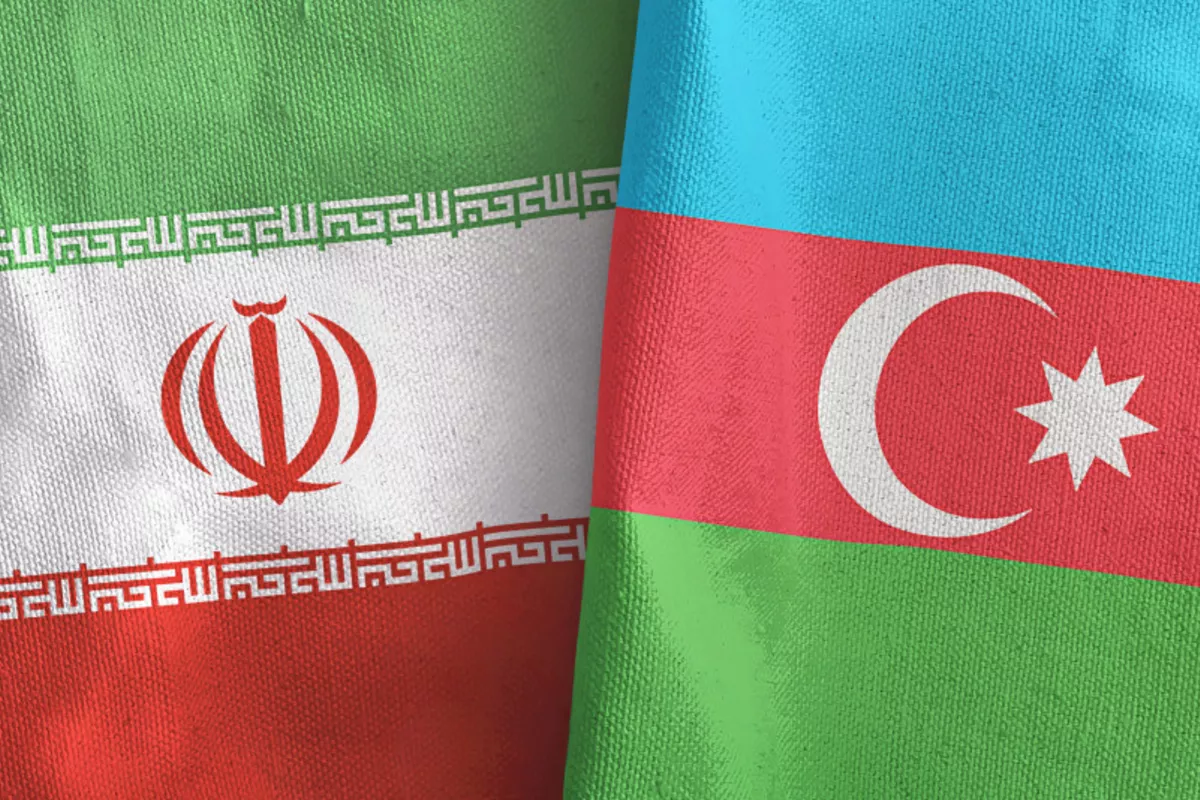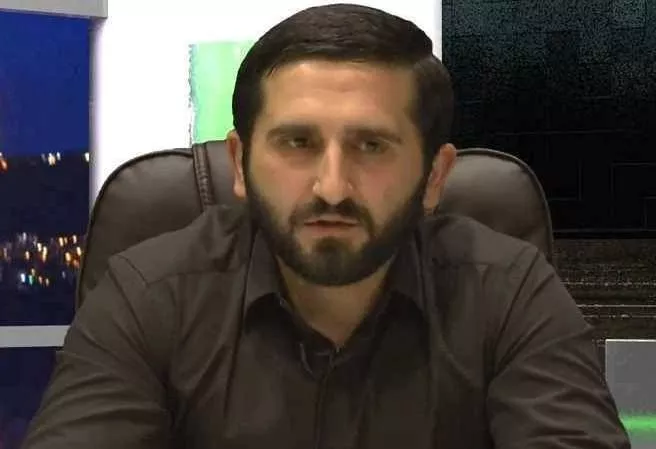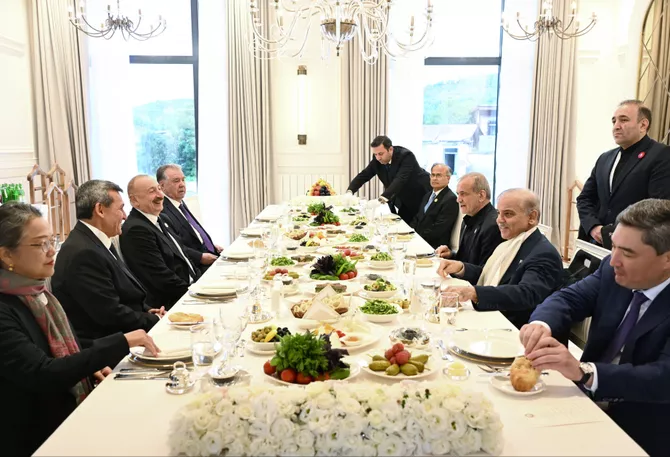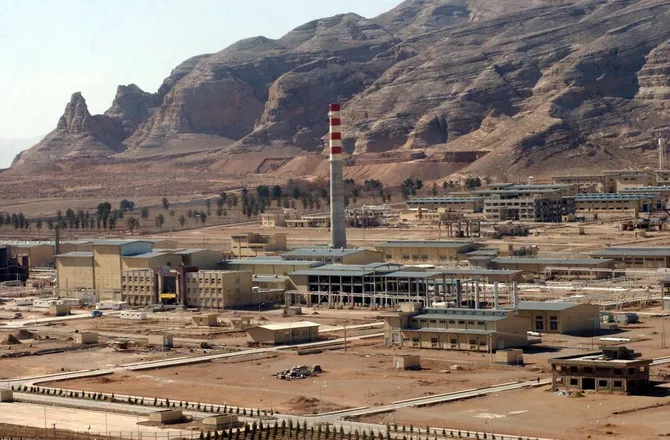
photo: Iramcenter.org
Interview with Georgian Political Analyst and Middle East Expert Vasili Papava for The Caspian Post.
photo: EdNews.net
- How do you assess Iranian President Masoud Pezeshkian’s participation in the 17th ECO Summit in Khankendi?
- The participation of Iranian President Masoud Pezeshkian in the 17th Summit of the Economic Cooperation Organization (ECO), held on July 4, 2025, in Khankendi, carries both symbolic and strategic significance for Tehran’s regional diplomacy and its evolving relationship with Azerbaijan. This move reflects Iran’s pragmatic approach: despite past tensions, Tehran is prioritizing regional cooperation and economic integration amid a complex geopolitical environment.
Pezeshkian’s decision to attend the summit in Khankendi demonstrates a willingness for constructive dialogue with Baku. Despite historical frictions-stemming from Iran’s perceived support for Armenia and its concerns over Azerbaijan’s close ties with Israel-the two countries emphasized their “brotherly” relations during the summit, highlighting shared cultural and religious affinities.
In his speech, Pezeshkian combined criticism of foreign aggression-specifically recent Israeli strikes against Iran-with a forward-looking agenda for regional economic integration. He called for the creation of a free trade zone by 2035, the modernization of transport infrastructure, and the establishment of an ECO regional artificial intelligence center. These initiatives aim to position Iran as a strategic transit hub and reduce its vulnerability to Western sanctions.
Domestically, the visit was met with criticism from conservative circles, who viewed it as a concession to Baku. Nevertheless, Pezeshkian’s proposal to host the next ECO summit in Iran demonstrated his confidence in managing these internal tensions.
His interactions with leaders such as Recep Tayyip Erdoğan and Shehbaz Sharif further underscored the summit’s importance as a platform for multilateral diplomacy. The agenda went beyond bilateral ties to address regional threats, from the Iran-Israel conflict to climate change. Once again, there was a strong focus on trade and logistics integration, as well as reducing dependency on external markets.

Photo: AZERTAC
- What are your forecasts for the negotiation process between the U.S. and Iran?
- The negotiations over Iran’s nuclear program are a complex and unstable process shaped by numerous factors: domestic political pressure, strategic mistrust, and regional tensions. Revived in 2025 under President Trump’s second term, the talks are likely to be protracted and difficult-but not doomed.
Since April 2025, indirect rounds of talks have been held in Oman and later in Rome, mediated by local officials. The delegations were led by U.S. Special Envoy Steve Witkoff and Iranian Foreign Minister Abbas Araghchi. Iran proposed reducing uranium enrichment to 3.67%, restoring UN inspections, and transferring enriched uranium to a third country in exchange for sanctions relief. The U.S. indicated a willingness to allow limited enrichment under strict international oversight-a departure from previous demands for full dismantlement.
However, in June 2025, the talks were disrupted by massive Israeli strikes on Iran’s nuclear facilities, followed by U.S. airstrikes. In response, Iran suspended the negotiations, accused the U.S. of betrayal, and launched retaliatory missile strikes on American bases. Despite this, both sides expressed interest in resuming dialogue, and Oman offered to host new rounds in July-underscoring a shared recognition that diplomacy remains preferable to escalation, especially in light of Iran’s weakened regional influence following setbacks in Syria and among its proxies like Hamas and Hezbollah.
Several key factors will shape the future of the talks. First, Iran’s dire economic situation and internal divisions are pivotal. Sanctions have deeply damaged the economy. The Pezeshkian administration, grappling with an economic crisis and political infighting-evidenced by the impeachment of Economy Minister Abdolnaser Hemmati and the resignation of Javad Zarif-views sanctions relief as a priority. At the same time, Supreme Leader Ali Khamenei’s skepticism toward the U.S. and insistence on preserving Iran’s nuclear capacity set strict boundaries. Iran is likely to resist any agreement resembling the "Libyan model" of full dismantlement, which it sees as capitulation.
President Trump’s administration, eager for a “historic deal,” is internally divided. Hardliners like Secretary of State Marco Rubio and National Security Advisor Mike Waltz demand maximalist concessions from Iran. Others, including Vice President J.D. Vance, support a diplomatic route to avoid another Middle East war. The U.S. proposal to establish a regional consortium involving Saudi Arabia and the UAE to oversee uranium enrichment reflects an attempt to reconcile non-proliferation goals with Iran’s desire to maintain a peaceful nuclear program. However, Trump’s contradictory rhetoric-oscillating between threats of force and optimism about progress-risks undermining trust, as does Israeli opposition.
Israel, strongly opposed to any deal that preserves Iran’s nuclear infrastructure, has shown a readiness to act unilaterally, complicating U.S. efforts to maintain allied unity. Meanwhile, France, the UK, and Germany have threatened to trigger the UN snapback sanctions mechanism ahead of the JCPOA’s expiration in October 2025. This increases pressure on Iran but could derail negotiations, as Araghchi has warned. Russia and China, excluded from the talks, may offer Tehran alternative economic pathways, reducing its motivation to strike a deal with Washington.
The most plausible outcome is a limited interim agreement-partial sanctions relief in exchange for temporary enrichment limits and expanded IAEA inspections. Such a deal would allow both sides to claim progress without resolving core disputes, like Iran’s missile program or the duration of nuclear restrictions. But even achieving this modest compromise faces major obstacles: deep mistrust following Trump’s 2018 JCPOA withdrawal, domestic opposition in both countries, and the risk of new provocations by Israel or Iran.
If negotiations collapse entirely, the risk of military escalation will grow. The U.S. and Israel could launch broader strikes, triggering Iranian retaliation and involvement of its regional allies-pushing the region toward a wider conflict.
In short, despite some signs of pragmatic engagement, the success of the negotiations depends on the ability of both sides to contain internal pressures and manage regional instability. A narrow agreement remains possible, but it will be fragile, and the road ahead will likely be turbulent-with the constant threat of confrontation.
- What is your assessment of the accusations against Azerbaijan regarding the alleged use of its territory by Israel for strikes on Iran?
- The accusations that Azerbaijan allowed Israel to use its territory for strikes against Iran-particularly during the June 2025 escalation-are primarily based on Iranian concerns and media speculation rather than verified evidence. These claims emerged after a series of large-scale Israeli airstrikes on Iranian nuclear and military sites, followed by retaliatory drone and missile attacks by Iran.
The allegations reflect Tehran’s long-standing suspicion of Azerbaijan’s military and economic partnership with Israel, as well as the region’s strategic geography-Azerbaijan borders Iran and lies along the Caspian Sea, which could theoretically be used as an aerial route.
Iranian officials and media referenced reports suggesting that Israeli drones or aircraft may have used Azerbaijani airspace, particularly over the Caspian, to strike targets in Tehran and beyond. Pezeshkian raised this concern in a phone call with President Aliyev on June 26, urging an investigation into a possible airspace violation. Iran’s ambassador to Armenia also hinted that drones had entered Iranian territory “from a neighboring country,” implying Azerbaijan.
Some Iranian sources even claimed that a discarded Israeli jet fuel tank was discovered off the Mazandaran coast in the Caspian Sea as supposed proof. These claims were amplified in Iranian media and social networks, where some outlets directly accused Azerbaijan of aiding Israeli operations-highlighting their strategic partnership and arms cooperation.
Azerbaijan firmly rejected these accusations. Following his conversation with Pezeshkian, President Aliyev condemned the Iran-Israel escalation, expressed condolences for Iranian casualties, and reaffirmed that Azerbaijan retains full control over its airspace and would not permit its territory to be used against Iran. He called the accusations “absolutely absurd.” Azerbaijan’s Foreign Ministry described them as “a blatant provocation” lacking credible evidence.
Foreign Minister Jeyhun Bayramov also assured his Iranian counterpart, Abbas Araghchi, that Azerbaijan would not allow its territory to be used for attacks on any country, including Iran. Baku emphasized its commitment to balanced relations with Tehran and noted its assistance in overland evacuations after Iran closed its airspace in response to the Israeli strikes.
No credible evidence has been presented to substantiate the claims against Azerbaijan. Reports of an Israeli jet fuel tank in the Caspian remain unverified and may be attributable to other causes. Notably, Iran itself has acknowledged the presence of Mossad-controlled drone bases within its borders-suggesting internal operations rather than external launchpads.
Moreover, Azerbaijan’s restrained diplomatic posture-calling for de-escalation-signals its intent to avoid involvement in a broader conflict, particularly given its economic ties with Iran and the risks of unrest among ethnic Azerbaijanis in Iran.
In conclusion, the allegations against Azerbaijan appear driven more by Iran’s strategic anxieties and the opaque nature of Israeli operations than by hard facts. Azerbaijan’s consistent denials, coupled with its interest in regional stability and non-involvement in the Iran-Israel confrontation, suggest that these claims remain speculative. Without verified evidence-such as satellite imagery or intercepted communications-the accusations are unsubstantiated and seem to reflect broader Iranian unease over the Azerbaijan-Israel relationship rather than a direct indictment of Baku.

photo: NBC News
- Axios has reported that Israeli authorities are considering new strikes on Iran’s nuclear sites if uranium enrichment resumes. What is your view on this?
- The report by Axios on July 7, 2025, stating that Israeli authorities are considering new strikes on Iran’s nuclear facilities if uranium enrichment resumes, underscores the fragile balance between deterrence, diplomacy, and escalation in the Middle East. It reflects Israel’s long-standing policy of preventing Iran from developing nuclear weapons, which it views as an existential threat, and highlights the difficulty of maintaining regional stability following the recent Israeli and U.S. military actions and the breakdown of nuclear talks.
The issue must be examined through strategic, diplomatic, and humanitarian lenses.
Israel’s readiness to strike key nuclear facilities-such as Natanz, Fordow, and Isfahan-aligns with its history of preemptive measures to neutralize perceived threats. The June strikes by Israel and the U.S., which reportedly caused significant damage, were aimed at delaying Iran’s enrichment capabilities, particularly the production of weapons-grade uranium. However, assessments vary: Israeli officials claim “very substantial” damage, while a leaked report from the U.S. Defense Intelligence Agency suggests the delay may be only a few months, with Iran’s uranium stockpiles either preserved or relocated.
Axios reports that Israel expects President Trump to approve further strikes if Iran resumes enrichment or restores nuclear infrastructure. This aligns with Prime Minister Netanyahu’s position that a nuclear-armed Iran is intolerable, especially given Iran’s current enrichment level of 60%, approaching the 90% threshold needed for a bomb.
Several factors drive Israel’s calculations. First, technical challenges in destroying deeply buried sites like Fordow require precise intelligence and potentially U.S. support, as Israel lacks bunker-busting bombs needed for such hardened facilities. The June strikes demonstrated this: U.S. B-2 bombers inflicted serious but incomplete damage to Fordow’s underground infrastructure.
Second, Israeli intelligence is likely monitoring for any signs of resumed nuclear activity-such as uranium movement or reactivation of centrifuges-which could trigger further action. The Axios report notes that Israel sees the window for effective military intervention narrowing as Iran disperses its facilities and strengthens defenses.
Third, domestic political pressure on Netanyahu to maintain a tough stance on Iran raises the likelihood of a preemptive strike, should credible evidence emerge.
However, further strikes pose serious risks. Militarily, they could prompt Iranian retaliation-as seen in June, when missile and drone attacks on Israel, though largely intercepted, resulted in civilian casualties and increased regional tension. Iran’s threats to strike U.S. bases or disrupt shipping through the Strait of Hormuz could draw in other Gulf states, such as Saudi Arabia or the UAE, who fear radioactive fallout and economic instability.
Diplomatically, renewed attacks would likely end any prospect of reviving U.S.-Iran negotiations, already derailed after Iran suspended talks in response to the June assaults. Humanitarian and environmental consequences could be severe: reports from June indicated radiological and chemical contamination near Natanz, even if radiation levels outside the facility remained normal. Further strikes on sites like Isfahan’s uranium processing plant or the Bushehr nuclear reactor could trigger significant fallout, as the IAEA has warned.
The ceasefire brokered by President Trump on June 23 is already fragile; further attacks could shatter it, roiling oil markets and trade routes. Indeed, Brent crude rose 4% after the June conflict.
In my view, despite Israel’s legitimate concerns over Iran’s nuclear ambitions, repeated military strikes represent a high-risk strategy with limited long-term effectiveness. Experts have noted that Iran’s nuclear infrastructure is decentralized and resilient, with possible secret enrichment sites likely to survive airstrikes. The June attacks, while substantial, failed to eliminate Iran’s uranium stockpiles or technical know-how-proving that military action alone cannot end the program.
A more sustainable approach would combine precision intelligence operations, regional diplomatic pressure, and incentives to bring Iran back to the table-such as those offered by intermediaries like Oman. Still, the situation remains volatile: future developments will largely depend on whether Iran takes verifiable steps to limit enrichment, or whether Israel identifies activity it deems provocative enough to justify another round of military strikes.
Asif Aydinly
Share on social media